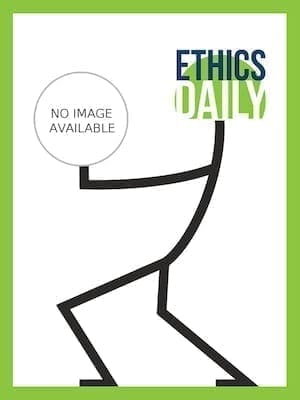People who listen to religious radio shows like “Focus on the Family” are less knowledgeable about current events than the average American, according to a recent survey on media consumption by the Pew Research Center for the People & the Press.
Just 12 percent of regular listeners of religious radio could correctly identify which party now controls Congress, who is the current U.S. secretary of state and name the new prime minister of Great Britain.
That is ahead of regular consumers of media like “Access Hollywood” and the National Enquirer but behind viewers of TV news magazines, morning news shows and network news. The national average is 18 percent.
People who view “fake” news shows like “The Daily Show” and “The Colbert Report” are better informed than readers of “real” news programs like “O-Reilly Factor” and “Lou Dobbs Tonight.” The highest knowledge of current events was found among readers of The New Yorker and The Atlantic (48 percent), NPR (44 percent), MSNBC’s “Hardball” (43 percent), and “Hannity & Colmes” at 42 percent.
Fifty-three percent of those surveyed correctly identified the Democrats as being in control of Congress. Just 43 percent could name Condi Rice as Secretary of State and 28 percent knew the name of British Prime Minister Gordon Brown.
Conservative Republicans represent the core audience for religious radio. Just 6 percent of the general public listens to religious radio on a regular basis, while 34 percent of conservative Republicans said they tune in regularly or sometimes.
Women outnumber men among those who regularly listen to religious radio by more than 2-1. Sixty-nine percent of religious radio listeners are women, while just 31 percent are men.
The influence of religious radio is on the decline. In the current survey 18 percent of Americans said they listen to religious broadcasts sometimes or regularly. That is down from 23 percent in 2006 and 26 percent in 2004.
For the first time in about 15 years, fewer than half of Americans (46 percent) report reading a daily newspaper on a regular basis. Sizeable minorities are “integrators” (23 percent), who get their news from a mix of traditional sources like television and on-line sources” and “Net-Newsers” (13 percent) who get most of their information from the Internet.
Just because young people are Internet savvy and spend more time online doesn’t mean they are well informed. Despite the increasing variety of ways to get the news, about a third of those younger than 25 (34 percent) said they get no news on a typical day, up from 25 percent in 1998.
Social-networking sites are very popular with young people, but they have not become a major source of news. Just 10 percent of those with social-networking profiles say they regularly get news from these site.
For the first time a slight majority of Americans (51 percent) now say they check in on the news from time to time during the day, instead of at regular times.
Fifteen percent of Americans say they have a smart phone, such as an iPhone or a Blackberry, and 37 percent of smart phone owners use them to get news.
The survey found that the public is skeptical about what they see, hear and read in the media. Just 30 percent give CNN the highest credibility rating–on a scale of one to four–compared to 28 percent for local TV news and 27 percent for NPR.
Fox News channel’s credibility rates even lower (23 percent). At the bottom of the list are CBS News (22 percent) and BBC (21 percent.)
The survey was conducted by telephone from April 30 to June 1 among 3,612 adults nationwide. The study is repeated every two years.
Bob Allen is managing editor of EthicsDaily.com.

